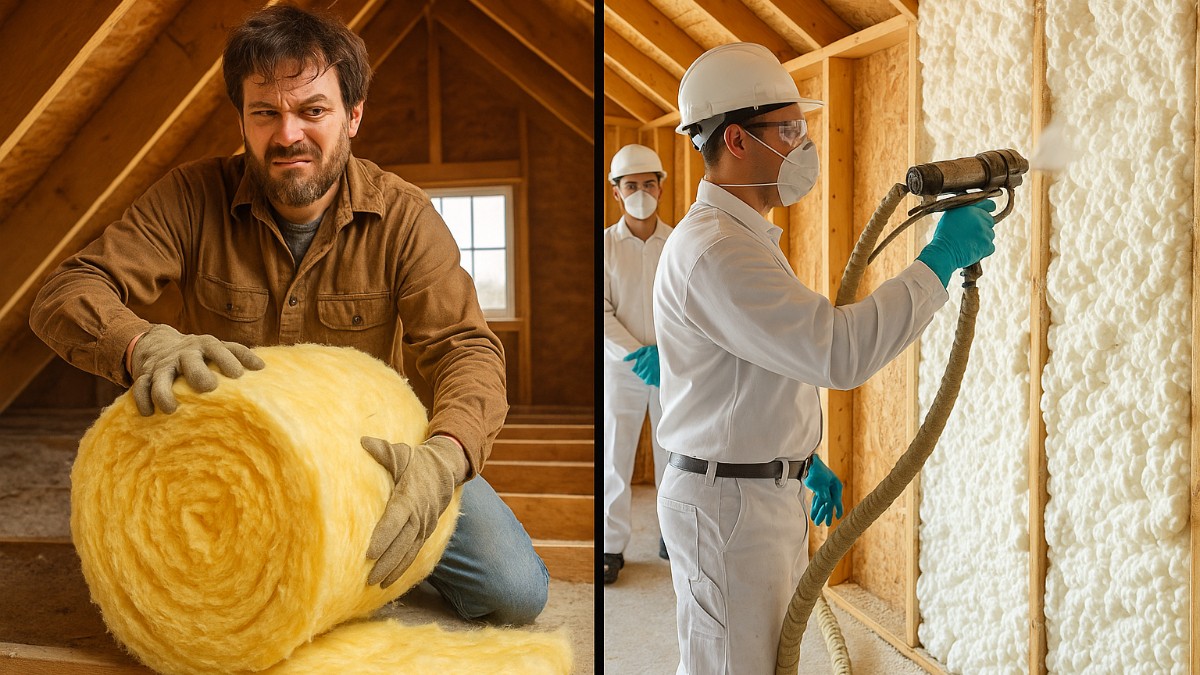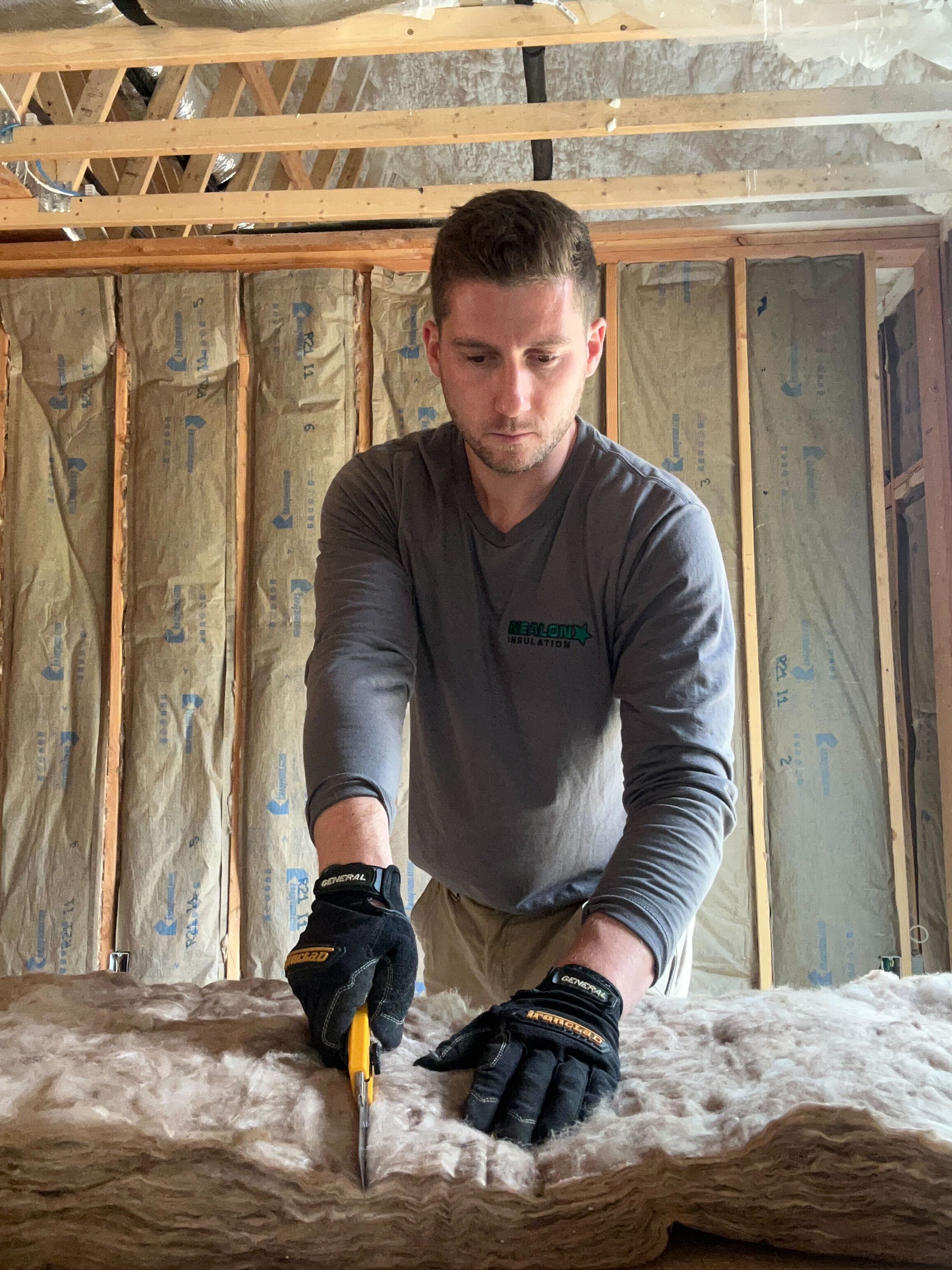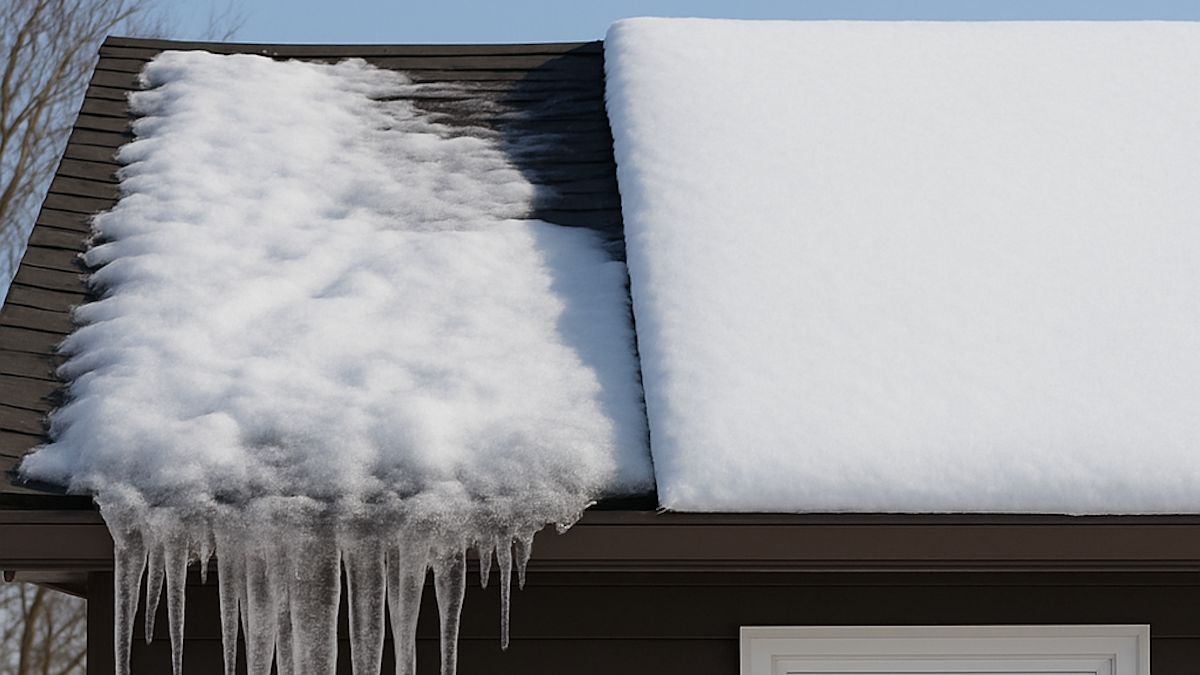DIY Insulation vs Contractor: When to Do It Yourself and When to Hire a Pro

Here’s the age-old homeowner debate: “Do I roll up my sleeves and slap in some insulation, or do I call in the pros?”
On paper, DIY insulation looks like a quick way to save a pile of cash. But before you throw on a dust mask and dive headfirst into a roll of fiberglass, let’s talk about when DIY actually makes sense—and when it’s more like lighting your money on fire.
Spoiler: sometimes you’re better off letting a contractor sweat it out while you sit in the AC.
DIY Insulation: When It Makes Sense
Alright, let’s give DIY some credit. There are definitely times when grabbing a utility knife and a box of fiberglass batts is the smart move.
- Attic floors and small jobs – Laying batts or rolls on your attic floor? Totally doable. Same goes for sealing up a small crawl space or basement wall section. If you can measure, cut (mostly straight), and wear gloves, you’re halfway there.
- Budget-friendly wins – No surprise here: DIY insulation is cheaper up front. A few hundred bucks in materials versus thousands for a contractor. That’s real money.
- Simple materials – Fiberglass batts, mineral wool, or foam board are the bread-and-butter DIY choices. They’re easy to cut, fit, and install without needing fancy equipment.
The catch? (There’s always a catch.) DIY insulation only works in spots that are easy to reach, low-risk, and small enough that messing up won’t cost you an arm and a leg later.
Think of it this way: painting a bedroom wall? Sure, do it yourself. Painting the outside of a skyscraper? Maybe don’t. Same principle with insulation.
The Risks and Drawbacks of DIY
Okay, here’s where the shiny “I’ll save money by doing it myself” plan starts to lose its luster. DIY insulation isn’t all cozy savings and YouTube tutorials—it comes with some pretty real downsides.
- Health & safety hazards – Fiberglass loves to remind you it’s made of tiny glass shards. It itches, it stings, and if you skip the respirator, you’ll be coughing like you just swallowed a sandstorm. Plus, crawl spaces and attics aren’t exactly ergonomic work zones.
- Performance issues – Insulation only works if it’s installed right. Leave gaps, smash it into place, or pick the wrong R-value, and congratulations—you just built yourself a very expensive draft.
- The “redo” cost – Here’s the kicker: fixing botched insulation costs more than hiring a contractor in the first place. We’ve seen plenty of DIY jobs where homeowners thought they nailed it, only to call us six months later because the house still feels like an icebox.
Bottom line: unless you’re comfortable suiting up like you’re heading into a construction site, understand R-values, and have the patience to do it right, DIY insulation can turn into a false economy.
Professional Insulation Contractors: When to Call in the Pros
Here’s the truth: some insulation jobs are about as DIY-friendly as rewiring your own electrical panel. You could do it, but the odds of shocking yourself (or in this case, wasting money) are pretty high.
- Spray foam insulation – Those DIY spray foam kits at the hardware store look tempting, but here’s the reality: they’re messy, pricey, and super easy to screw up. Too little foam, you get air leaks. Too much foam, you warp your walls. Pros have rigs that heat, mix, and apply foam perfectly. You don’t.
- Blown-in insulation – Filling an attic with loose-fill cellulose or fiberglass requires special blowing machines. Yes, some big-box stores rent them, but unless you’re planning to turn your Saturday into a snowstorm of itchy fluff, it’s not worth the hassle.
- Big or tricky spaces – Basements, crawl spaces, rim joists, cathedral ceilings—these spots are awkward, tight, and often damp. One misstep and you’ve either under-insulated or created a future mold farm.
And let’s not forget the perks of hiring a contractor:
- Better performance – Installed right, insulation can cut your energy bills by 20% or more.
- Access to rebates – Here in Connecticut, EnergizeCT offers rebates and financing for professional installs. DIY jobs? No rebates for you.
- Your weekends back – While we’re suiting up and crawling around in your attic, you can actually enjoy your Saturday.
Think of it like fixing your car. You might handle an oil change, but when the transmission blows, you want a mechanic—not a YouTube video.
Cost Comparison: DIY vs Contractor
Let’s talk dollars, because that’s usually the dealbreaker. On the surface, DIY insulation looks like a bargain. But once you add up materials, tools, time, and the “oops” factor, hiring a pro often isn’t as pricey as it first seems.
Here’s the kicker: contractors can tap into rebates and incentives (like EnergizeCT), which can shave off a good chunk of the pro price. DIY doesn’t qualify.
And don’t forget the hidden “cost” of your time. That Saturday you planned to insulate your attic? It’ll take twice as long, be twice as sweaty, and probably involve twice as many trips to Home Depot.
Sometimes the smarter spend is paying someone else to deal with the itchy stuff.
How to Decide: DIY or Hire Out?
Still on the fence? Here’s a quick gut-check. If you nod “yes” to most of these, grab your gloves. If not, save yourself the headache and call a pro.
DIY makes sense if:
- The space is easy to reach (open attic floor, small wall cavities, rim joist).
- You’re working with simple materials (fiberglass batts, mineral wool, foam board).
- The job is small enough that mistakes won’t haunt you later.
- You’re cool with spending a weekend crawling around in dust.
Hire a contractor if:
- The project involves spray foam or blown-in insulation.
- You’ve got a basement, crawl space, or other tricky area that loves moisture.
- The job is big, whole-house, or time-sensitive.
- You want to qualify for rebates and incentives.
- You’d prefer your Saturday involve a beer and a ballgame—not a respirator and a staple gun.
Bottom line: DIY insulation is like changing your own oil—totally doable for some. But for the big stuff, bringing in a contractor means less risk, more comfort, and long-term savings.
Conclusion
Here’s the deal: DIY insulation has its place. Tackling an attic floor or stuffing some batts into an easy-to-reach crawl space? Go for it. You’ll save some cash, learn a new skill, and maybe only itch for a couple of days.
But when it comes to spray foam, blown-in, basements, or whole-house projects—you’re better off calling in the cavalry. Contractors bring the gear, the know-how, and access to rebates that DIY just can’t touch. Plus, you get a home that’s actually comfortable instead of one that feels like you half-did the job.
At the end of the day, it’s not about bragging rights for doing it yourself—it’s about comfort, efficiency, and not paying to heat the great outdoors.
Common FAQ's about DIY Insulation
Can I mix DIY insulation with professional installation in the same home?
Yes, you can mix DIY insulation with professional installation. Homeowners often install simple attic batts themselves and hire contractors for complex work like spray foam or blown-in insulation. Always ensure materials are compatible and R-values meet local code to maintain performance and compliance.
How do I know if my DIY insulation job was done correctly?
You know your DIY insulation job was done correctly if the insulation fits snugly without gaps, sits flush with framing, and meets the recommended R-value for your climate zone. Drafty rooms or unchanged energy bills suggest mistakes or missed areas that reduce performance.
What tools do I need for DIY insulation?
DIY insulation requires a utility knife, straight edge, staple gun, measuring tape, safety glasses, gloves, and a respirator. For blown-in insulation projects, you also need a blower machine, which can be rented from most home improvement stores to distribute the material evenly.
How long does insulation last if I install it myself?
Insulation can last 20–30 years for fiberglass and cellulose, and even longer for spray foam, regardless of who installs it. The bigger risk with DIY is sloppy installation, which can reduce lifespan by allowing moisture, settling, or air leaks that undermine performance.
Does DIY insulation affect home resale value?
DIY insulation does not directly affect home resale value, since buyers focus on comfort and efficiency rather than who installed it. However, poorly installed insulation can raise inspection concerns and become a negotiation issue, potentially lowering the sale price or requiring corrections before closing.
Related Articles
Let's Work Together
Ready to transform your home into an energy-efficient haven? Schedule your free energy assessment today and experience the Nealon difference for yourself.



